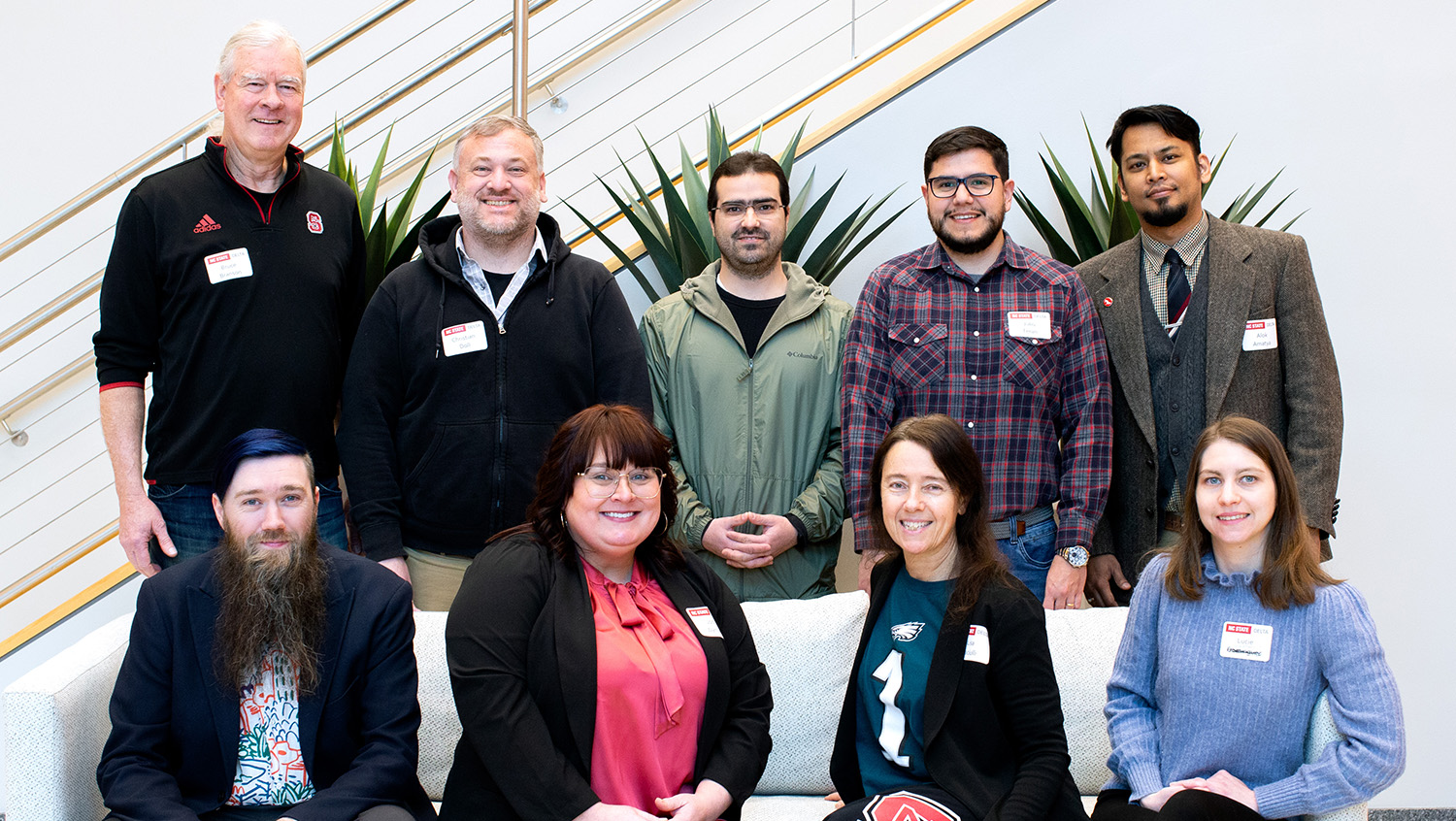Teaching Strategies for Online Group Work
Annotated Bibliography
Teaching Strategies for Online Groupwork – Home
Teaching Strategies for Online Groupwork – Annotated Bibliography
Appendix A – Sample Assignment
Appendix B – Sample Email
Chen, C.C., Wu, J., Yang, S.C. & Tsou, Hsin-Yi. (2008). Importance of diversified leadership roles in improving team effectiveness in a virtual collaboration learning environment. Educational Technology and Society, 11(1), 304-321.
The authors cite a variety of literature that indicates best practices in teaming include ensuring teams have a clear purpose, goals, manageable size (3-12 people), operating guidelines, and good communication in order to be effective. The authors’ study investigates the issues of “leadership and trust” in 14 randomly assigned student teams (12 – 13 members each), with a total of 178 undergraduate students participating in an online class in Taiwan private university.
Students were given specific directions about logging into the course and introducing themselves to their teammates, were told to elect a team leader, and were given a series of questions to respond to around a case study. Students had access to synchronous tools and email. 80.5% of students responded to the survey for this study. The survey measured leadership roles, leadership effectiveness, team trust, team satisfaction and the individual propensity to trust, with the outcome of the case study also used as a dependent variable.
The study illustrated the diversified leadership roles are important, with the ability to be a producer, that is, someone who is task-oriented, can focus on getting the work done and motivate others to do so, as the most important role for a “virtual team under a tight deadline” (p. 316). This study suggested using a questionnaire/assessment to assess the leadership qualities of potential team leaders; as those with the best diversified leadership traits, including the role of producer, to enable the success of the teams.
Davies, W.M. (March 20, 2009). Groupwork as a form of assessment: common problems and recommended solutions. Higher Education. 58, pp. 563 – 584.
This paper begins with a review of some of the literature citing the advantages of groupwork, from both the perspective of student learning (e.g. groupwork can promote active, deeper learning), and the more pragmatic, management perspective (e.g. groupwork is one way to manage assignments in situations with increased enrollments). Problems with groupwork are also discussed, including that of the “free-rider” – the “non-performing group member who reaps the benefits of the accomplishments of the remaining group members with little or no cost to him/herself” (Morris & Hayes, 1997, as cited by Davies, 2009, p. 567). The term “social-loafing” is often used “interchangeably” with free-riding. The “sucker-effect” problem is also discussed; that is, when good students don’t want to be “suckers” and do all the work, thus sometimes deciding not to contribute to a task when they see others loafing, choosing to sometimes fail instead of carrying the load for all. Cultural effects on groupwork are also discussed in this paper, related to the challenges for non-English speaking students working in groups.
The author outlines a number of other factors that contribute to the group experience, such as the type of task given, the complexity of the task, recognition of individual effort, ideal group sizes, and incentives and penalties. Based on all of this information, the author makes a number of extensive recommendations for addressing each of these issues, and provides a sample “group contract proforma” which may be very helpful in supporting successful groupwork.
Mandernach, B. J. (August 12, 2010). Online group work: making it meaningful and manageable. Magna Online Seminars. Magna Publications, Inc. (written transcript of an audio recording).
The author notes that student schedules are probably one of the most challenging issues for groupwork, especially groupwork for adult learners; however, other challenges include grading, supervising, designing assessments, and student attitudes toward groupwork. However, despite the challenges, the author believes that there is much benefit to online groupwork including gaining multiple perspectives and learning how to work well with others in a virtual environment – something they will be expected to do in the workplace. She points to research that indicates groupwork has benefits related to the effort to achieve, building positive relationships and promoting psychological health, and research regarding the cognitive benefits of groupwork that include learning, retention, and time on task.
Effective online groupwork falls into three categories; (a) work where there is not a “right” answer [e.g. debate], (b) work where multiple perspectives are needed [e.g. case studies], and (c) work where there are too many resources for one person evaluate on their own. Mandernach suggests the following checklist for online groupwork:
1. Preparing the students – ensuring that they understand the value of the process and product; providing them guidance, ensuring the group is small enough to allow all to participate, and provide community building before group projects in the course take place. The author suggests that prior to the first group assignment, that groups be assigned and told to get in touch and get to know each other. She also suggests that 3 – 5 is the optimal number to decrease social loafing.
2. Consider the assignment – ensuring that it is appropriate for groupwork, that students have clear guidelines on what it should look like, that there is adequate time to complete it. Other considerations include the frequency of feedback that instructors give to students, and the pace of assignments.
3. Technology – ensuring that students have online tools/instructions for how to virtually work together and have the skills to do so
4. Evaluation – ensuring that grading takes into account process and product and rubrics are provided, and that self/peer evaluations are included. She especially noted the importance of peer evaluation as a way to manage social loafing; noting that while nothing can completely prevent social loafing to some extent, that have self and peer evaluations help make individuals more accountable.
The author also provides a sample introduction to send to students to gain their support for groupwork, sample instructions on how to teach students to collaborate online, a number of sample rubrics and recommended readings.
Hanson, R.S. (2006). Benefits and problems with student teams: Suggestions for improving team projects. Journal of Education for Business, 11 – 19.
While aimed at business faculty, Hanson has distilled a number of findings from a fairly comprehensive review of the literature related to student teams. The author notes the demand for increased teamwork in business, and points to literature that illustrates both benefits of teamwork (e.g. increased learning outcomes with a “learning by doing” approach, active learning, improvement of communication and social skills), and some of the problems of teamwork when the structure is not in place to optimally support teaming (e.g. social loafing where one does not contribute to the team but wants to take part in the credit of the completed task, a lack of leadership, scheduling conflicts, and those who really want to work alone). Hanson indicates that mitigating the problems that sometimes arrive with group work mean that instructors must properly prepare students for being successful on a team, and he provides the following ten guidelines for improving student performance on teams:
1. Emphasize the importance and relevance of teamwork activities. Perhaps provide an example in your field of teamwork in action and how this is a real, needed skill.
2. Teach teamwork skills. Talk to students about the stages of team development – let them know that it will take a while to establish good communication and trust. It’s okay if it’s not easy at first.
3. Conduct some team-building exercises. Games that break down barriers and create cohesive – like coming up with a group name and song, or mission and vision, help build the team.
4. Determine the method of team formation. Hanson cites some evidence that student preferences for selecting groups are not the “most important criterion for effective group work” (p. 13), and that student teams may actually have more stability and have a better experience “when groups are selected by the professor (p. 13). Hanson notes that when students can select their friends on a team, this is often the “worst method” of selection.
5. Assign a reasonable workload with clear goals – if students perceive “they have been assigned too much work [they] may develop negative attitude” (p. 13). The author posits that semester long teams working on larger projects work best as long as the project has defined parameters.
6. Require team members to have specific roles on the team (e.g. a team leader, recorder, etc.). A professor can assign roles, let them evolve, and encourage the team to rotate roles if that make sense.
7. Put aside some class time for team meetings – as it isn’t always feasible for students to meet outside of class.
8. Request that teams provide interim feedback in order to track their progress and performance. Verderber and Serey (1996), as cited in this article, suggest that teams should provide written progress reports at least three times prior to a final project being due in order to ensure progress by all team members.
9. Require individual team members to keep a personal contributions file to ensure that individual accountability is fostered and to “mitigate the problem of free riding” (p. 14). The author indicates this is an especially useful skill for students to carry into the workplace; that is, the skill of documenting personal accomplishments.
10. Use peer evaluation as part of team effort grading – again noted as an accountability tool. Citing Pfaff & Huddleston (2003), the author indicates that “the use of peer evaluations yields a more positive attitude toward teamwork because such feedback methods allow students to feel they are more in control of the result and their efforts” (p. 14).
This paper also has three very useful appendixes with graduate comments about teamwork, references to literature that details benefits and problems associated with group projects, and a list of elements of the most satisfying group experiences (which occur when there is cooperation, leadership, relevancy, clear goals, specific team roles, and interim reports or checkpoints).
Goold, A., Augar, N. & Farmer, J. (2006). Learning in virtual teams: exploring the student experience. Journal of Information Technology, 5, 477 – 490.
Using an action research methodology, the authors used three surveys to collect data from 21 seven-member undergraduate student teams in an online project management course that were working in teams during the course (n= 147, with the three survey response rates 44, 37, and 36%). Limitations of this study include low response rates and factors that may not have been taken into account that may be of special concern for international students (e.g. limited prior groupwork experience, poor English skills), who comprised 60% of the students in this course. The course was hosted in a learning management system (Blackboard Vista). In their literature review, the authors noted the prevalence of online teaming in business and industry, specifically pointing out the use of teams in information technology fields.
The most commonly used method for communicating with team members was via the course discussion forums, though email, live chat, and some telephone use was noted. Students in the survey indicated that they learned more working with their peers than by reading the text/completing assignments on their own. Elements students noted they liked about online teams included the electronic record of their work and the efficiency of meeting online requiring no travel/timing issues. Dislikes included some increased difficulty in communicating online vs. in-person (clearly understanding each other), and team members that left their contributions to the last minute prior to something was due (the problem of social loafing in groups). Students mentioned specific challenges with team members that have poor English communication skills. Students also indicated they would prefer to select their own teams, perhaps reflecting frustration with teammates who were perceived as social loafers or poor communicators.
Responses in this study were mostly neutral when students were asked if they preferred to work alone or with others, with a slight skew towards working alone. While the majority of the student respondents in this study reporting enjoying group work, about 15% indicated they did not like it at all. When comparing online groupwork vs. face-to-face groupwork, the online groupwork rating was lower than the rating for groupwork in the traditional classroom, and interesting, the overall course satisfaction rating dropped 15% when comparing the usual ratings of the face-to-face section offered with the online sections.
Whaley, J.E. (2009). Ground rules in team projects: findings from a prototype system to support students. Journal of Information Technology Education, 8, 161-176.
The author outlines some of the benefits (e.g. preparation for the workplace) and challenges (e.g. schedules, developing trusts, social loafing) of teamwork, and then explores the use of an online support system for the team to use in developing ground rules in working with each other. Using the software system provided and an interpretive case study method to collect and analyze feedback from students who were using the system, students were asked to select from a list of ground rules that were important to them in working as a team. While not necessarily as important to particular individuals, ground rules were used by team leaders to create team contracts and/or perform other guiding tasks to help keep teams on track. Having ground rules understood by the team was thought to help promote team unity, though team leaders could not necessarily get all team members to adhere to the rules at all times.
- Categories:


